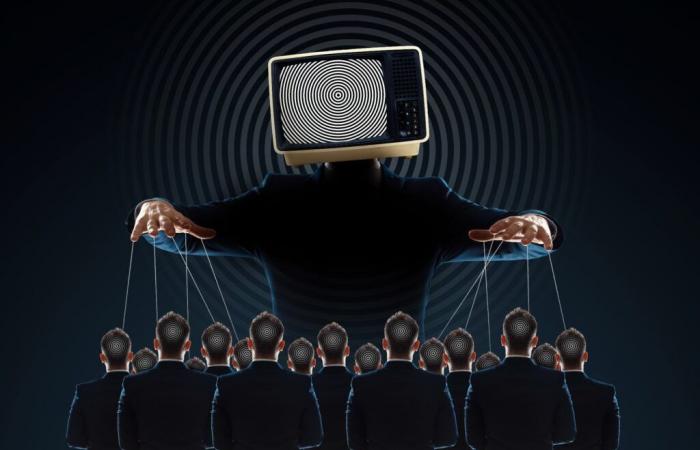Learn how age, analytical skills, and ideological leanings affect your ability to detect misinformation online and why interventions are more critical than ever in today’s polarized digital world.
Study: Susceptibility to online misinformation: a systematic meta-analysis of demographic and psychological factors. Image credit: Marko Aliaksandr
Scientists from the Max Planck Institute for Human Development, Germany, conducted a meta-analysis to identify the main demographic and psychological factors that determine an individual’s susceptibility to online misinformation. The study, published in the journal PNAS, identifies these factors.
Background
Receiving and spreading misinformation online can have a range of negative consequences in a person’s life, including the development of biased political perceptions, vaccine hesitancy, and resistance to climate-friendly behavior.
Nearly five billion people use social media to receive information. Previous studies examining individuals’ susceptibility to online misinformation have primarily focused on single demographic or psychological factors, often leading to conflicting results.
These studies primarily used the well-known news headline paradigm, in which participants evaluate the accuracy of news headlines, that is, headlines potentially accompanied by a byline or image.
In this study, scientists pooled individual participant data from the news headline paradigm and conducted a systematic meta-analysis using generalized Bayesian linear mixed-effects modeling to determine the Impact of key demographic and psychological factors on accurate judgment of online misinformation.
Study design
The meta-analysis included a total of 256,337 unique choices made by 11,561 US-based participants across 31 experiments.
The study examined four demographic factors (age, gender, education and political identity) which represent the main characteristics of the population and four psychological factors (analytical thinking, ideological similarity to current events, motivated thinking and self-reported familiarity with current events ) which are vital for judging disinformation.
The meta-analysis aimed to understand how these factors influence two often confused decision-making mechanisms: discrimination ability and response bias. Discrimination ability refers to the ability to distinguish true from false news, and response bias refers to the tendency to classify news as true or false.
Important observations
Analysis of participants’ baseline discrimination ability and response biases across all studies revealed that participants do not exhibit an overall tendency to treat news as true or false. However, individual studies have demonstrated substantial variability in response bias.
Among the demographic factors analyzed, age has a positive impact on discrimination ability and a negative impact on response bias. These observations indicate that older adults have higher levels of accuracy and are more likely to judge a news headline as false.
Concerning gender, no credible effect on discrimination ability was observed. However, a negative association was found with response bias, with female participants exhibiting higher fake news bias (classifying news headlines as fake) than male participants.
Simplified visual summary of the main signal detection analysis. (A) Middle shows a visual representation of basic discrimination ability. The perceived truthfulness of a news headline is represented by an axis from low truth to high truth, represented by the two Gaussian distributions. The more the distributions overlap, the more similar true and false headlines are perceived to be (i.e., poor discrimination ability), while the less they overlap, the more true and false headlines are perceived to be different (i.e. the discrimination ability is high). . The left shows which factors were associated with reduced discrimination ability and the right shows which factors were associated with increased discrimination ability. (B) The middle shows a baseline response bias, which is determined by a decision criterion (i.e., vertical dotted line). The answer to whether a news headline is true or false depends on where the headline falls on the criterion. If the criterion is placed higher on the perceived truthfulness dimension (left), more evidence is needed to treat a news headline as true, therefore a headline is treated as true less often, leading to a news bias. response to fake news. The opposite is true for a response bias to true news (i.e., less evidence is required to make a news headline true; right). Baseline response bias was neutral in our study. The left shows factors associated with response bias to fake news and the right shows factors associated with response bias to real news.
Education level was positively associated with response bias. Participants with higher education levels showed true information bias, which led to higher accuracy for trustworthy news and lower accuracy for fake news. In other words, higher education participants showed an increased tendency to view information as true.
However, the analysis found that higher education did not have a significant impact on discrimination ability.
Political identity showed a strong negative association with discriminatory ability. Republicans had reduced discrimination ability and lower overall accuracy than Democrats.
A positive association was also observed between political identity and response bias. While Republicans showed slightly higher accuracy for real news, Democrats showed the same for fake news.
A strong positive association was observed between analytical thinking and discrimination ability. Participants with higher analytical thinking skills showed higher overall accuracy.
Regarding response bias, a negative impact of analytical thinking was observed. This led to the observation that participants with higher analytical thinking were more likely to judge a news headline as false and therefore had greater accuracy for fake news.
Regarding ideological congruence (ideological similarity to the news), the analysis revealed that participants were more likely to judge news headlines as true if they aligned with their ideological position and vice versa.
In other words, ideological congruence was associated with an increased tendency to believe news headlines (partisan bias), but had no effect on discrimination ability.
Motivated thinking (higher analytical thinking skills being associated with a greater congruency effect) and self-reported familiarity with the news also showed associations with true news bias.
Among different news headlines, featured topics showed no significant effect on discrimination ability, indicating strong results across all topic types.
News headlines displaying the source of the news had a strong and positive influence on discrimination ability, leading to higher overall accuracy. This effect was more pronounced for Republicans than Democrats.
Significance of the study
The study reveals that older people or those with higher analytical minds are better able to distinguish between real and fake news. In contrast, people who identify as Republicans have poorer information discrimination ability.
Given the importance of demographic and psychological factors in shaping judgments about the accuracy of misinformation, scientists highlight the need to develop interventions that can target these factors in order to increase people’s ability to resist attacks. serious and negative consequences of online disinformation.
Developing such capacity among the general population is key to successfully managing global political challenges ranging from climate change and violent conflict to pandemic preparedness and democratic backsliding.






